
Tall perennials add vertical interest and height to your borders and flower beds—and return year after year. Flowers that grow on tall stalks add a level to your borders, for example. Their varied colors, eclectic foliage and flowers larger than your own head form beautiful harmonies that do not go unnoticed in the garden.
Adding taller perennials (that can can grow up to 5 to 10 feet) at the middle or back of borders will add that third dimension to your planting, as well as a layer to it. And this layer is very important in garden design because it brings that “wow” factor that get noticed in your landscape. And this is why any sizable garden needs some spiky perennials that grow towards the sky. Yours too!
Placed correctly, perennials with long flower stalks are not only impressive in the garden, they are also suitable for a flowering privacy screen.
There are an immense number of varieties of perennials that grow tall for all situations, from shade to full sun. Their various flowering periods, from spring to winter, make it possible to have scenes that are always in bloom.
Attractive in an isolated garden corner, along the fence and walls or in a flower bed, here are 15 of the very best tall, statement making perennials that you can’t do without for that vertical pull in your garden!
Why You Should Use Tall Perennials in Your Garden?
There are many garden design reasons why you should use taller perennials in gardens, and I have put them together for you.
Having said all this, also remember that perennials don’t nerd planting every year. For this reason, at the back of a border, you will prefer a tall perennial rather than a tall annual. Why? Because you won’t need to reach over there next year, and risk even damaging the plants in front of it.
But are there any special tips I have to grow tall perennials? Of course, and here they are.
Some Tips to Grow Tall Perennials
These tips come from experience and I hope they will be useful to you.
15 Best Tall Flowering Perennials To Add Height in Your Garden
You will find giant perennials suitable for very sunny spaces or, on the contrary, for shaded areas. Hollyhock, foxtail Lily, and sneezeweed will reveal all their beauty in full sun. To brighten up the dark corners of the garden, choose brightly colored perennials such as foxglove, or baneberry which will impose their generous dimensions alongside low-growing perennials.
Finally the list of tall perennials I have chosen for you! They are all beautiful and easy to grow , but in selecting them, I looked at their height, but also their presence and personality, as well as flowers and foliage quality.
Here are the 15 extra-tall perennials you cannot leave out of your garden if want height but also colors, flowers and great foliage!
1. Foxglove (Digitalis spp.)

Foxglove is a classic tall perennial with beautiful bell shaped flowers that come on long and upright spikes. It gives lots of color, vibrancy and blooms that last for a whole season.
But it also adds that vertical dimension, because the flower stems and the inflorescences form long cones of color that point to the sky.
There are many varieties to choose from, some smaller (like Digitalis obscura and Digitalis parviflora), some taller, like Digitalis purpurea. There are many award winners in this genus of flowering perennials, including Digitalis purpurea ‘Camelot rose’, with magenta flowers and Digitalis grandiflora, with lime yellow flowers.
It is ideal for borders and beds in informal gardens, like the English country garden and it is a “must” in cottage gardens.
2. Valerian (Valeriana officinalis)
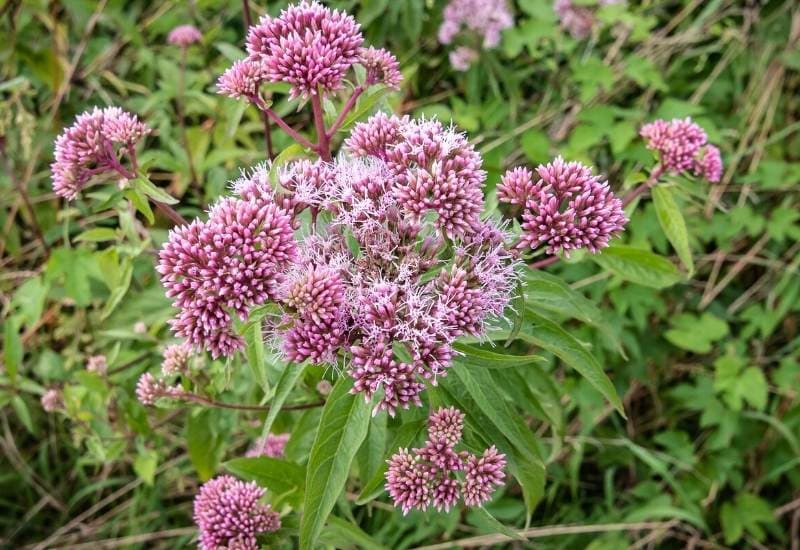
Valerian is not just a popular and healthy herb, it is also a tall perennial which can reach 5 feet tall (1.5 meters). This, however, is only when it is in bloom. What does it mean? It means that it is one of those beautiful dynamic plants that can shift from middle to high, changing the overall look of your border or bed over time.
The blooms are pink and white, plenty and very light and “lace like” in appearance. It is great in informal gardens and even wild prairies. It is not ideal as a “wall”, hedge or visual barrier. And of course, you can have both a great herb to harvest and a beautiful, flowering tall perennial.
3. Monkshood (Aconitum spp.)
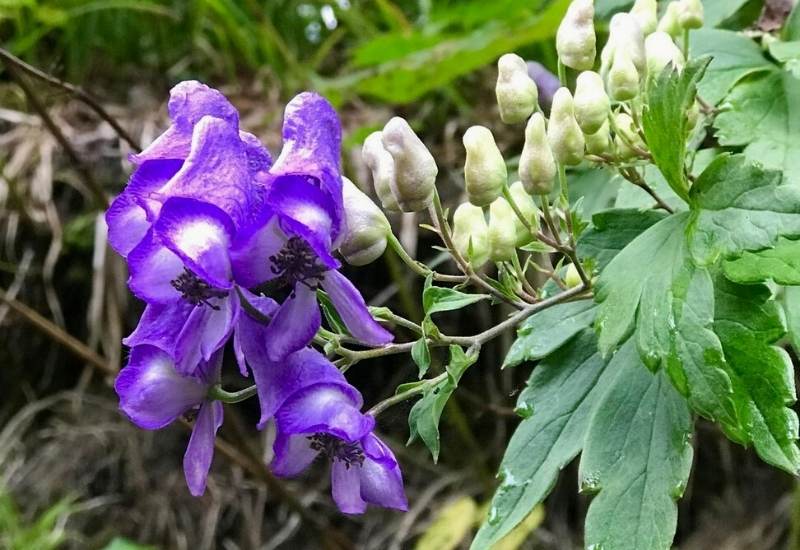
Monkshood is a beautiful herbaceous tall perennial flower also known as aconite, queen of poisons or devil’s helmet. The flowers are quite striking because they do look like hoods, even monks with big hoods… They are very original and they come on inflorescences with spaced flowers on them. This makes them very light in appearance.
There are about 250 different species, and they have low foliage but very tall stems with the colorful racemes on them. This makes them ideal as “veils” in your garden, rather than “walls”. They are perfect in informal borders and beds, where they can bring fluttering flowers that seem to be flying in the air at eye level.
4. Elfdock (Inula helenium)
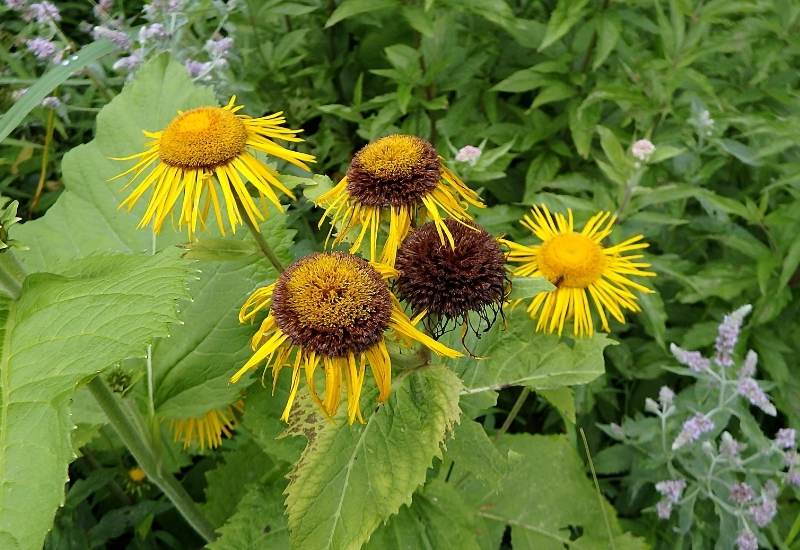
Elfdock is a tall perennial with bright yellow showy flowers, which look vaguely like “unkempt sunflowers”. It is a relative of the aster, and it has a vibrant but rebellious look. Added to its very herbaceous and spontaneous appearance, elfdock is perfect for the natural and wild look.
The flowers are abundant and they will look great at the back of natural looking borders. The foliage is broad and hard shaped, which makes it very decorative But this is also a plant you will want in wold looking, low maintenance parts of a large garden. In fact it is also called wildflower, and it is easy to grow straight from seed.
5. Sneezeweed (Helenium autumnale)
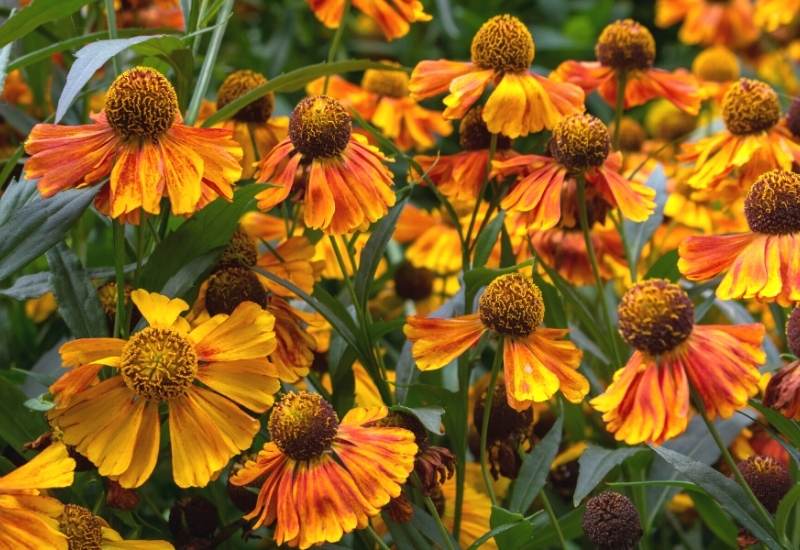
Sneezeweed is a North American tall growing flowering perennial that is related to sunflowers. And kn. Fact it has the same bright and energetic look, though the flower heads are smaller, about 3 inches in diameter (7-8 cm). But they are plenty and they have a range of energetic colors like yellow, orange, red and purple.
This is a perfect perennial to “lift” a border that need life, energy and vibrancy. It can also adapt to large wild prairies and cottage gardens. On the whole, it looks best in large clumps. In fact, this makes the best of its overall bright effect. It is also better suited for infprmal settings than formal ones.
6. Meadow Rue (Thalictrum spp.)
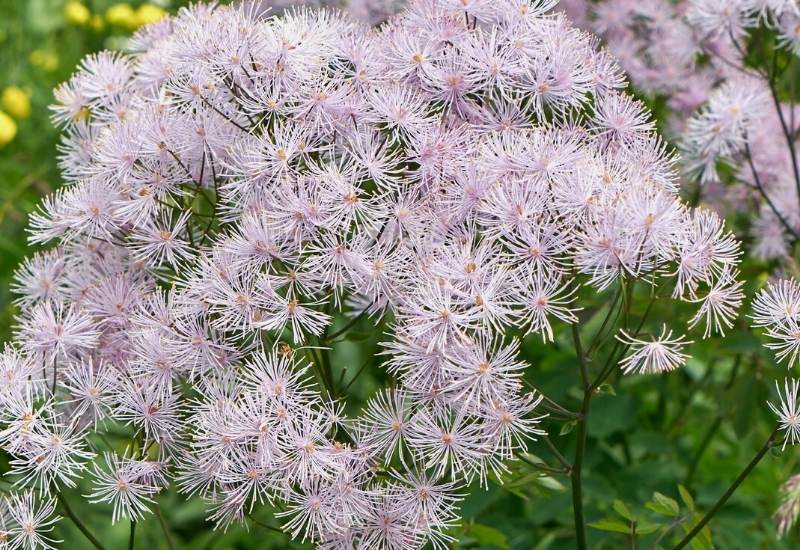
Meadow rue is a perennial flower that can grow to be 8 feet tall (more than 2 meters). It tops it all with spherical, snow flake like flowers that come in elegant inflorescences. These can be of different colors according to the variety. But they are “specialized” in delicate colors, like lavender, cream, light yellow or even green yellow.
It is a fairly wild looking plant. It is a herbaceous perennial that looks good as a screen or at the back of a bed or border, where the flowers can be seen as an ensemble rather than individually. In fact, it is the overall effect you want from this plant, and it can be a perfect choice for a delicate looking backdrop.
7. Desert Candles or Foxtail Lily (Eremurus spp.)
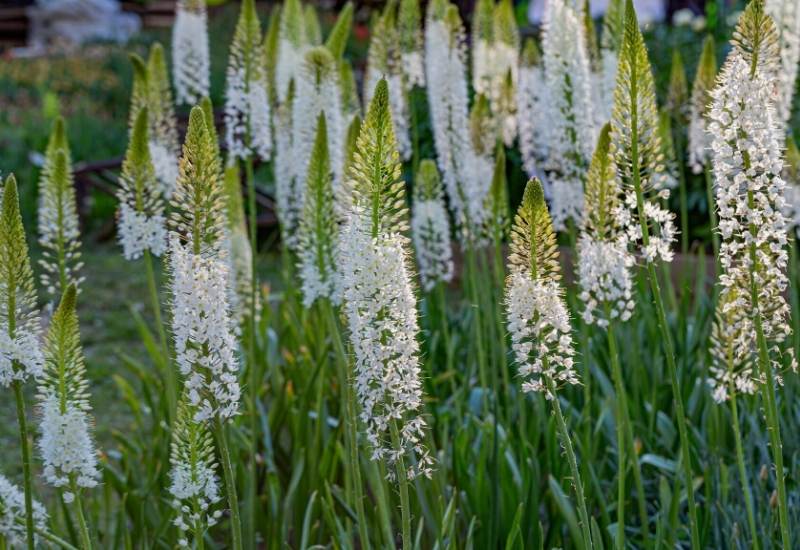
The name, desert candle, says it all about this perennial, which has tall and showy spikes full of flowers. They come like blades of fire in many colors, from white to bright yellow, orange, pink, red and purple. The long spikes will start blooming from the bottom and then “light up” to the very top with the many star shaped flowers to the very top.
The foliage is blade like and elegant too. For this reason, this is a tall bulbous perennial you may want even in your front garden. It is quite architectural and it looks great in showy flower beds or borders. You may even want it to accompany your guests to your front door by growing it at the sides of your front path, like candles that light the way to the altar…
8. Chimney Bellflower (Campanula pyramidalis)
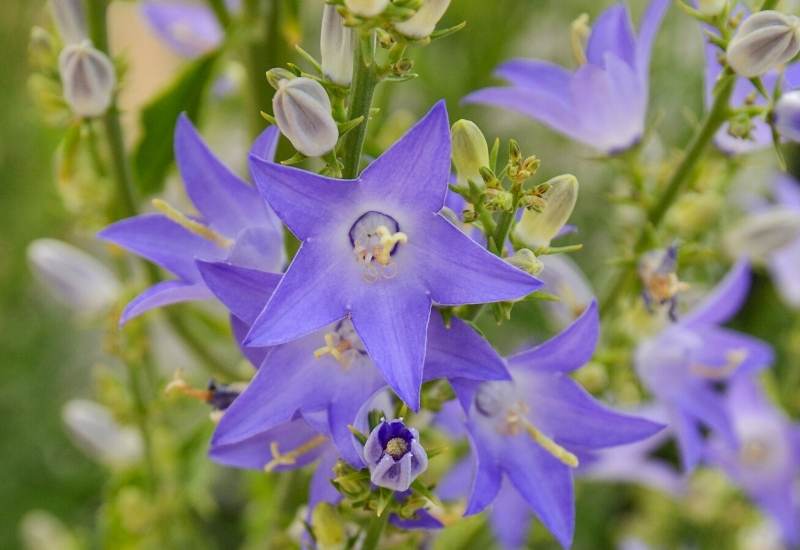
Meet chimney bellflower, a gorgeous herbaceous perennial with spikes of flowers that can reach 5 feet tall (1.5 meters). This is a classically looking bell flower, with lilac to lavender colored bell shaped flowers that open like stars at the mouth. As the Latin name suggests, the inflorescences are “pyramidal” or rather cone shaped and very long.
Chimney bellflower is another tall perennial that looks great in wold and natural looking gardens, like cottage and English country gardens. It is ideal for mid to back of large borders, or for very large flower beds.
It is only a short lived perennial (2 to 5 years) though, so you will need to replace it, or just allow it to self seed. In fact, it has become naturalized in many areas of southern Europe. Also, it will not bloom in its first year.
9. Globe Thistle (Echinops bannatocus)
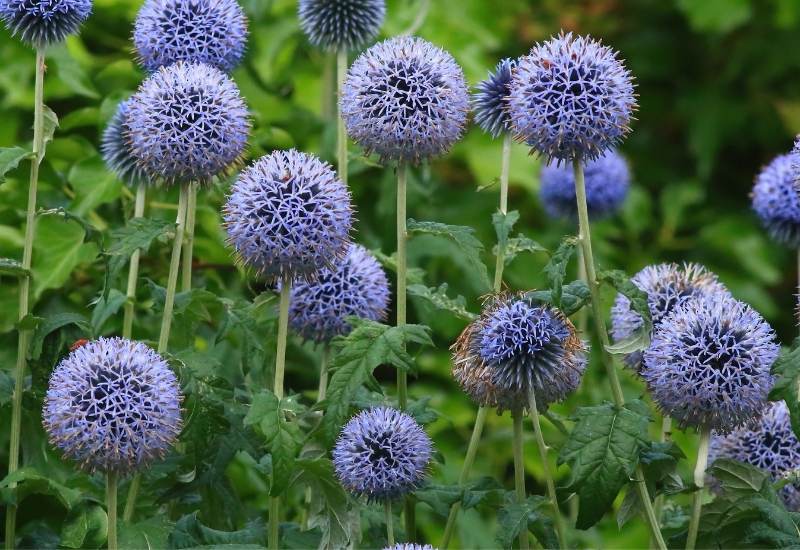
Echinops bannaticus is a species of globe thistle that grows taller than most others. In fact it can reach even 6 feet tall (1.8 meters). At that height, you will enjoy its beautiful globular inflorescences. Each is about 1.5 inches in diameter (4 cm) and it looks like a perfect round ball. The color is lavender purple, quite bright and showy.
Plant it in clumps in your beds and beds to make the best of the overall effect of this beautiful perennial. It is best suited for informal gardens even if the flowers would look good in a formal one. In some it would work though, as the foliage, in fact, looks good in a xeric or dry, rocky garden.
10. Hillside Black Beauty (Actaea simplex)
Hillside black beauty is a very decorative, architectural perennial. It has beautiful foliage, with broad segmented leaves of a wonderful dark purple shade. These, however, will stay fairly low, forming a rich and elegant shrub. But the blooms will come on top of them and they can be quite tall, up to 6 feet (1.8 meters). They are spikes of white to pink flowers on purple stems!
This is an excellent choice to bring some foliage color to beds and borders. It is also a plant that well adapts to formal settings, though it also looks good in informal gardens. And you fan grow it in beautiful containers if you want to give it some extra height.
11. Plume Poppy (Macleaya cordata)
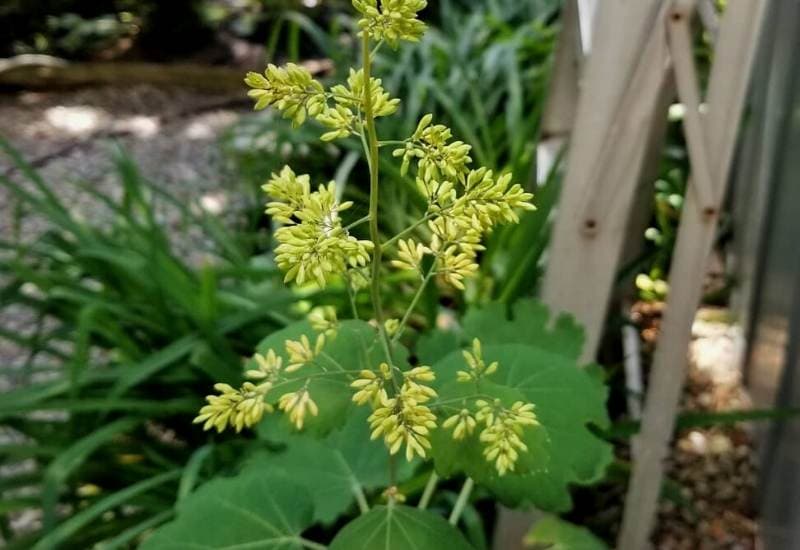
Plume poppy is a great garden perennial that can bring texture, color and height to your beds and borders. It is actually related to poppies but you would not tell it from the flowers. They are like colored fluff on long and thin branched stems. That’s why it is called “plumed”.They can be white, yellow, pink, orange, red it purple. They also come on top of broad and very decorative foliage which can be green or even blue!
It’s a lovely choice to fill in beautiful borders and it adapts to many conditions and places. It looks great in dappled shade, and it also has a very “lush” look, thanks to its impressively decorative leaves.
12. Hollyhock (Alcea rosea)
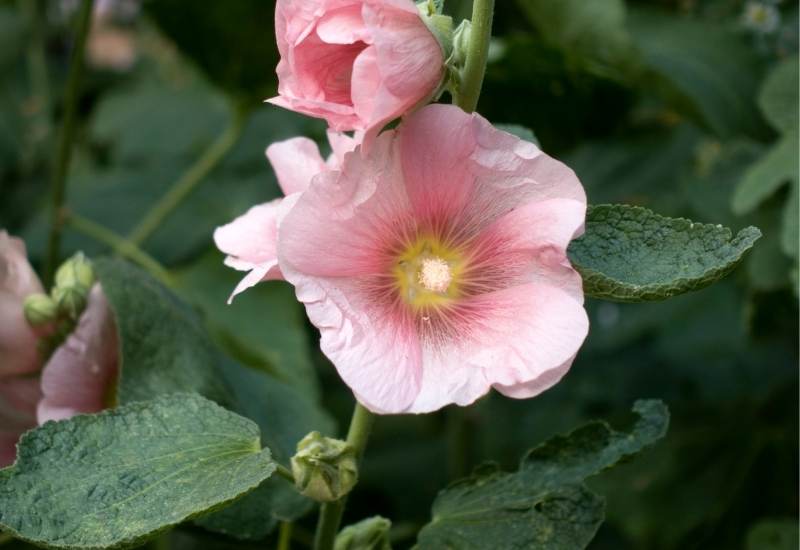
Hollyhock is a classic tall herbaceous perennial. With flowers of all colors, from white to purple via pink, red, orange, yellow and blue, it is an all time favorite. It is easy to grow and its blooms go on for months! The showy flowers come on very long stems. This makes it a “vertical” plant, which you can use to give that upright dimension to your borders or beds.
Hollyhocks are showy, but their herbaceous nature makes them more suitable to natural looking gardens, borders and tall beds. It is very common to embellish walls, and to coast paths and ditches.
13. Big Bluestem (Andropogon Gerardii)
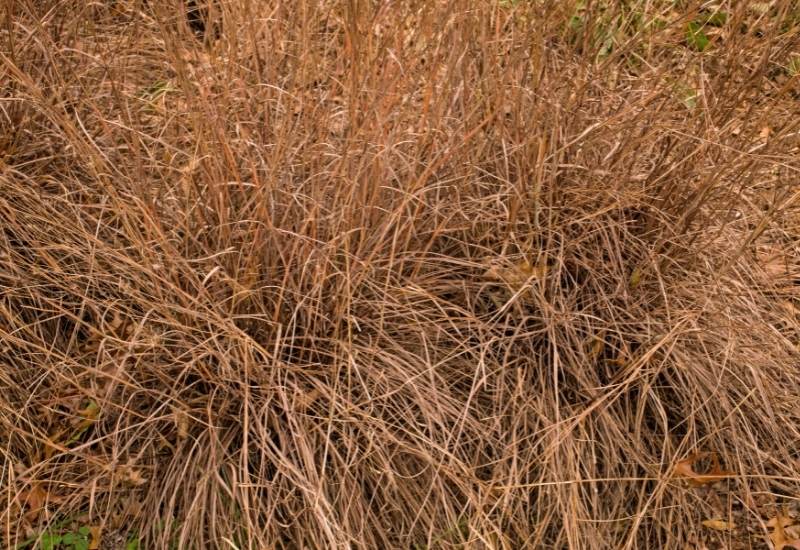
Big bluestem is a tall, beautiful and perennial grass that comes in different varieties. Some are green, some more on the red side, like ‘Indian Warrior’. It will not give you flowers, but it has a presence that no one can miss. It has an upright habit, with very long plumed stalks that end in little ear like plumes.
This plant is beautiful all year round. Do consider it to create clumps where foliage is the protagonist, or to give a vertical push to your borders and bed. Even in a lawn, this tall grass will look great, and it is perfect for gravel gardens and urban, low maintenance gardens.
14. Torch Aloe (Aloe arborescens)
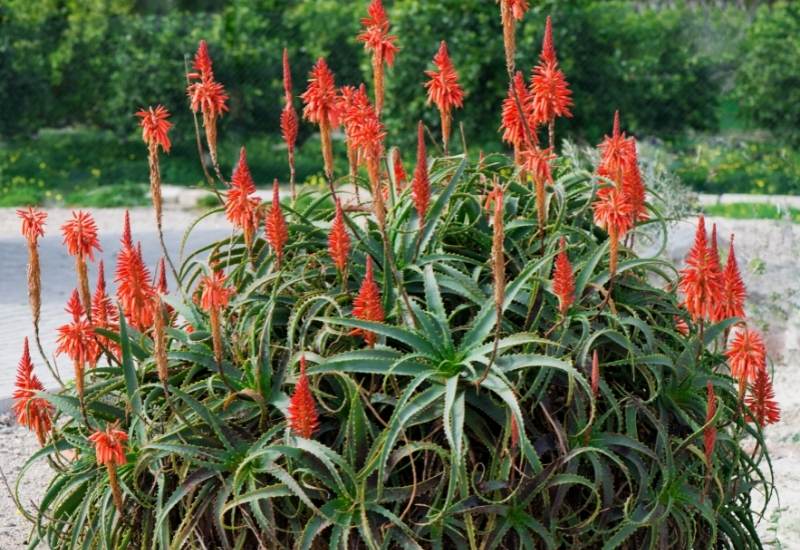
For a garden in a hot country, torch aloe is a perfect tall flowering perennial. It is a wonderful succulent, close relative of the more famous aloe vera, but… It is much bigger, growing up to 10 feet tall (3 meters) and it has massive and long lasting blooms of flaming red flowers. These are tubular and “waxy” like most succulent flowers. But they also come in spikes that look a bit like burning candelabra. Hence the name.
This is a wonderful plant for big flower beds. Alternatively, you can grow it on its own to make the best of it. It is ideal form many types of gardens, formal and informal, desert gardens, gravel gardens etc. Maybe not for a cottage garden though…
15. Culver’s Root (Veronicastrum virginicum)
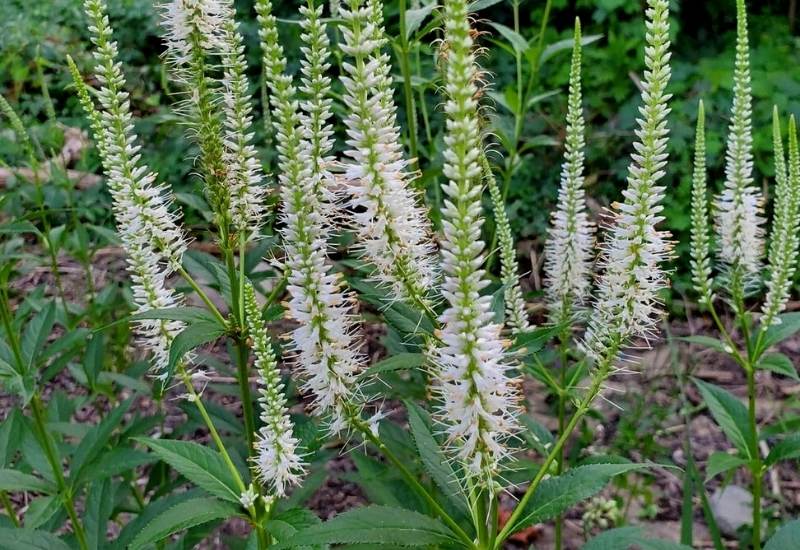
Culver’s root is a lesser known tall perennial. But it has lots to offer! It forms clumps of long stems that have like “stars” of leaves around them. These are regular along stems, a bit like a pagoda roof. At the top, they have long and thin and long spikes of many flowers. These are the thinnest and most elegant you can find. They can be white, pink or lavender.
The blooms last very long and they come late. So, this is the perfect tall perennial you want to bring life and light to borders late in the season, when it is often hard to keep them nice and fresh. Perfect for informal settings.
Going Up to the Sky with Tall Perennials
You will agree that there are really beautiful tall perennials you can grow in your garden. Some are “just tall” but many actually point up, as you can see. These are the plants that “point to the sky” and they have a very uplifting function in gardens. Don’t forget to grow some in yours too, because they will bring the blue of the sky into your back garden!

Written By
Adriano Bulla
After many years as an academic in London, Adriano Bulla became a writer, publishing books like A History of Gardening, Organic Gardening and Elements of Garden Design; he then decided to become a gardener, following his childhood dream, and has been following his dream writing and gardening professionally in Southern Europe, where he has specialized in new and innovative organic gardening fields and techniques, like permaculture, regenerative agriculture, food forests and hydroponics.

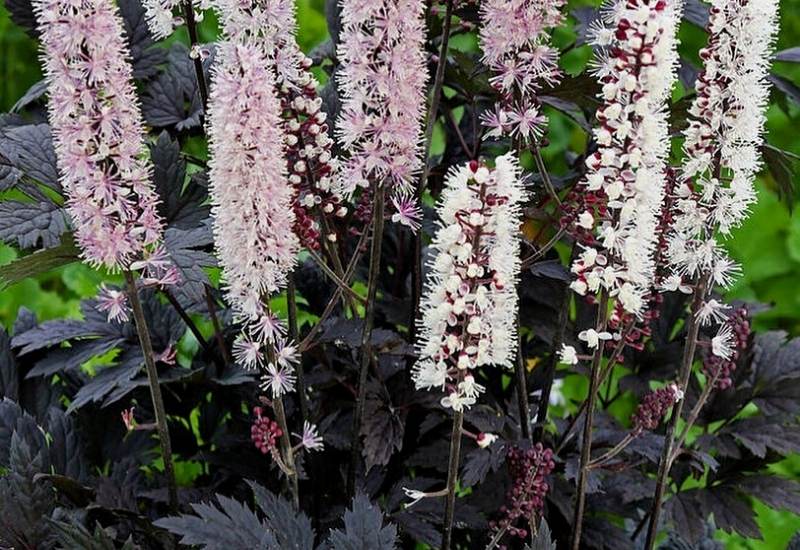
Nice choices. I think someone slipped in an image of Joe Pye Weed, instead of red valerian though.